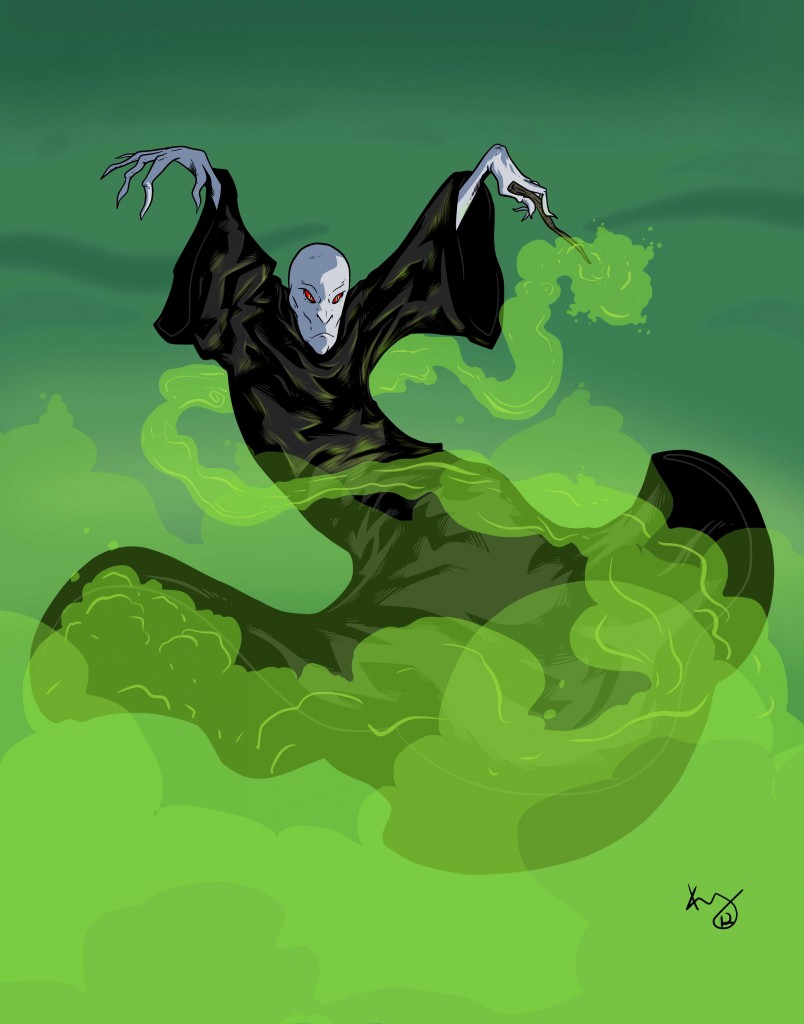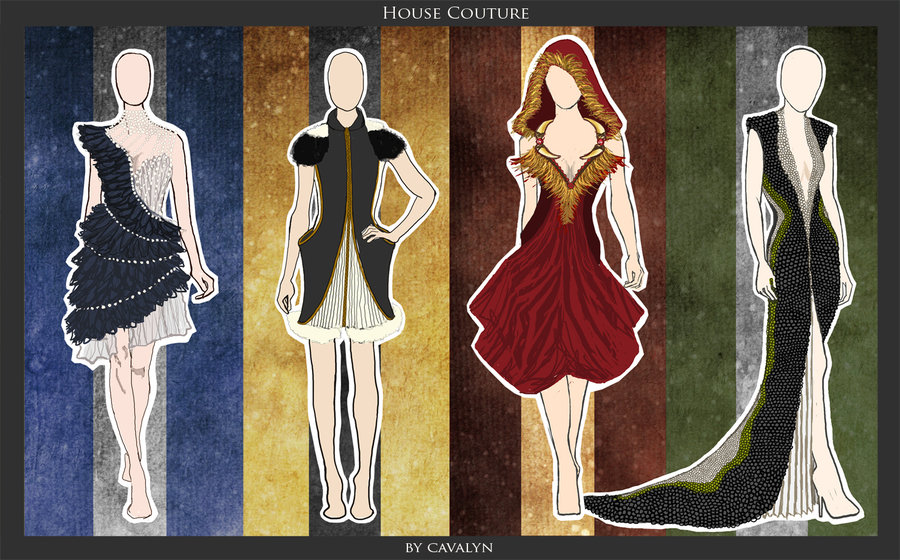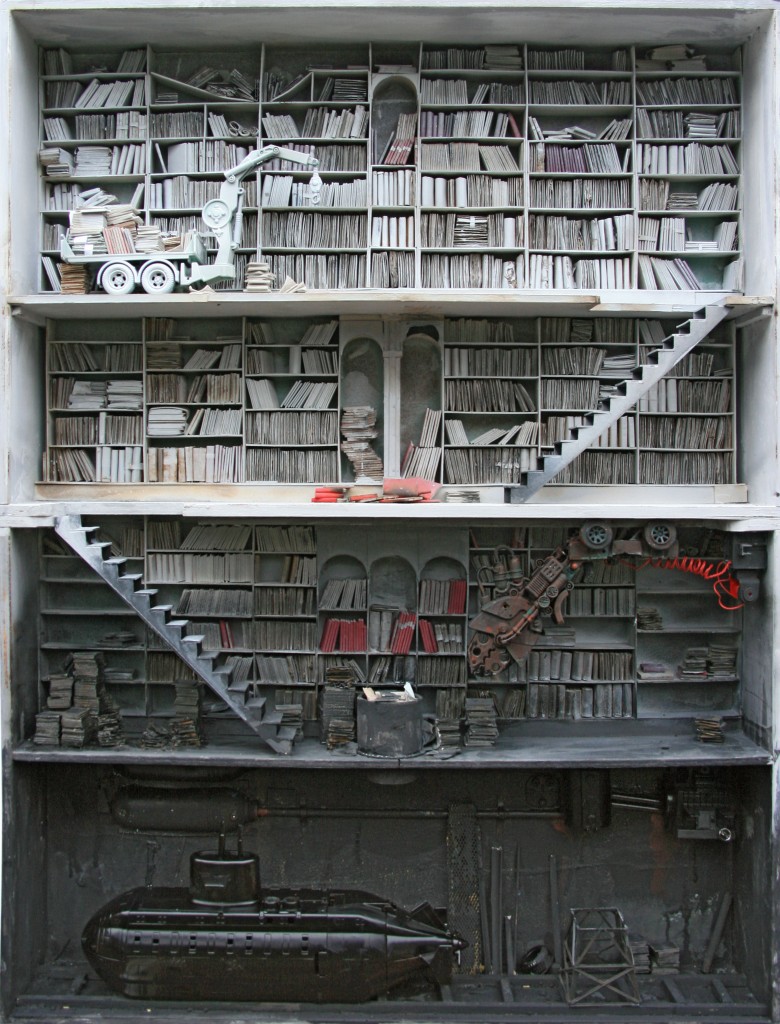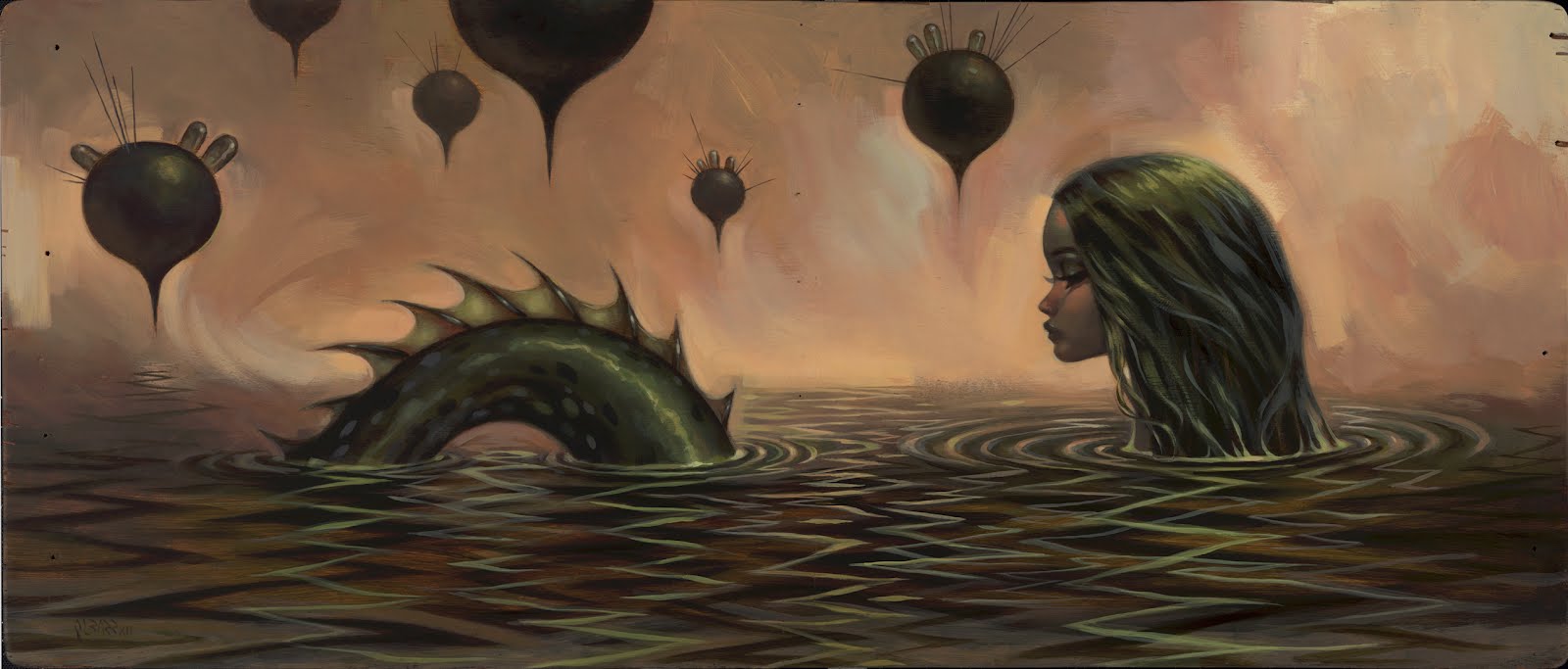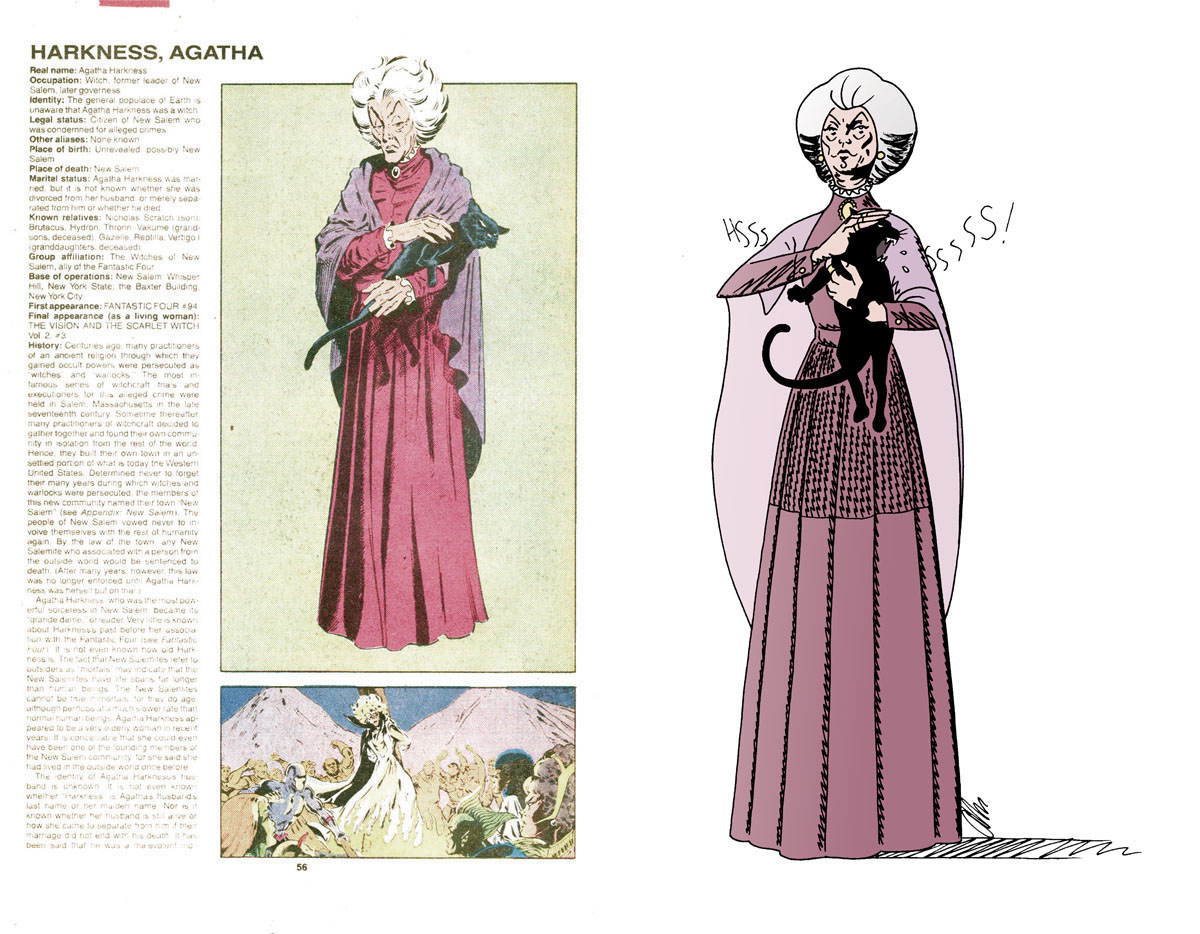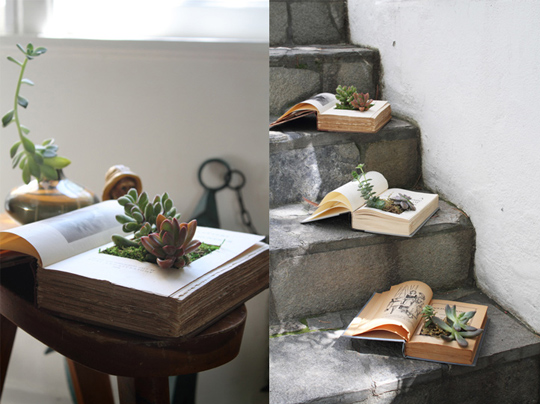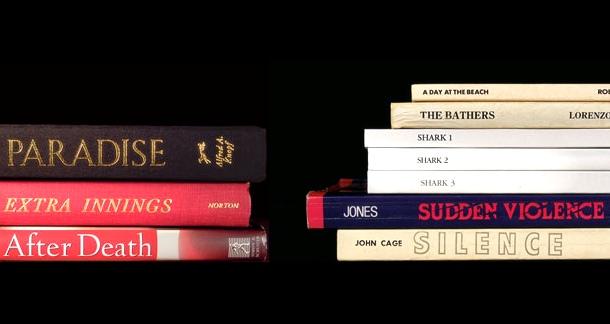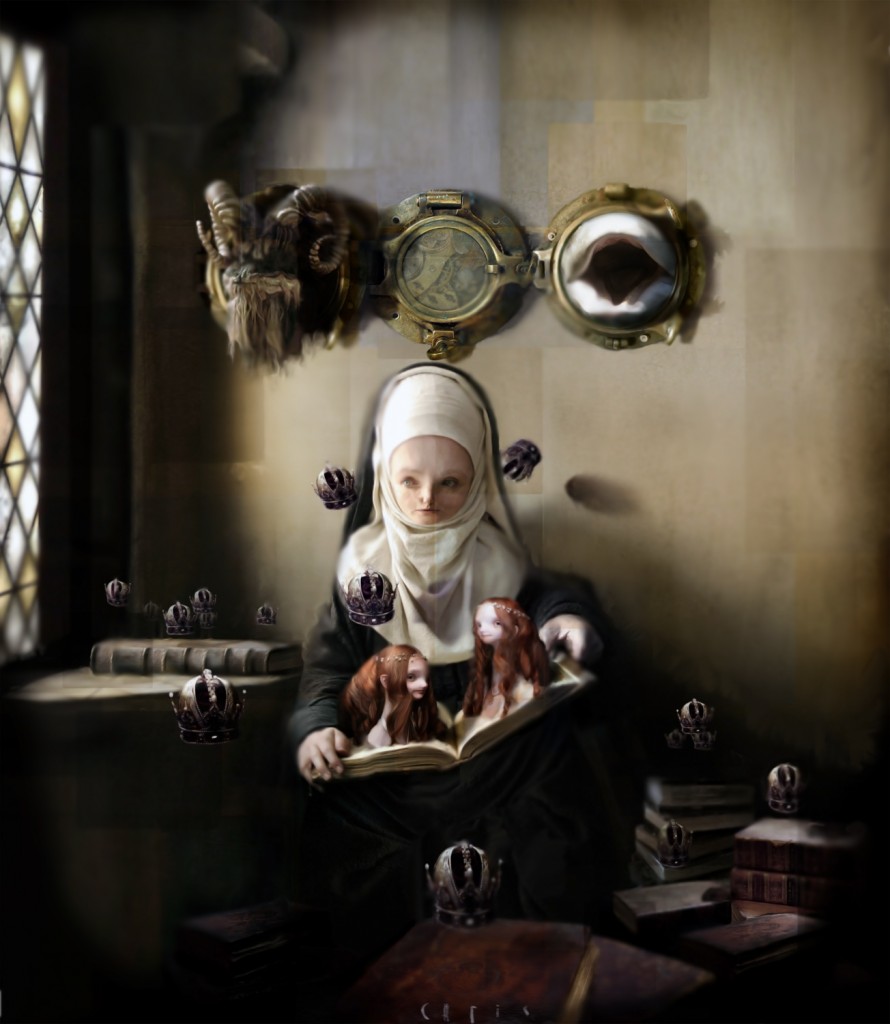 Here are some shiny things that caught my eye recently:
Here are some shiny things that caught my eye recently:
♦ For those of you who dream of singing in the rain or in The Umbrellas of Cherbourg, or who dream of multiple covers of Rhianna‘s “Umbrella” (by the by, I love those covers), or who might prefer a less monochromatic Mary Poppins (though, of course, why would you?), have a gander at one of the images from photographer Patricia Almeida‘s umbrella installations brightening the public walkways of Barcelona (clicking Almeida’s name will take you to her Flickr account, where you can see several more photos). Via.
♦ Book Nook.
This past week AlphaBooks, an alphabetical tumblr exploration of fictional characters curated by Ben Towle, has moved to the L’s. While I really liked Lucy Westenra (from Dracula) by Andrew Neal and Luna Lovegood (from the Harry Potter series) by Ben Towle, I’m going to share Lord Voldemort by Kelly Williams:
Speaking of Harry Potter, check out these two links: Stunning Hogwarts-Themed Dresses Are High Fashion Magic and An Incredibly Detailed Scientific Explanation of Harry Potter‘s “Wizarding Gene.”
Some very fine online reading for you this week:
The Curious Case of Version 47.13 by Ekaterina Fawl
Dear Editor, Enclosed Please Find My Story about Your Unfortunate Demise by Luc Reid
To Be Undone of Such Small Things by Damien Walters Grintalis
Innocence, Rearranged by Annie Bellet
Armless Maidens of the American West by Genevieve Valentine (oh, Armless Maidens, how fascinating you are)
♦ Marc Giai-Miniet is a French artist who makes beautiful, almost melancholy dioramas; one of the parts I like most about his work is the absence of human figures. I’ve often thought about making dioramas of my own, and Giai-Miniet’s work has certainly re-inspired me. Below is one piece I particularly like (so difficult to narrow it down), which you can click to see larger. For more examples of his dioramas, check out his website by clicking his name above. Via.
♦ On her blog, Greer Gilman asked her readers how they arrange their book collections, and reading this post just made me happy. I was fascinated by the myriad ways people order their libraries, as I am, of course, obsessed with my own system. My library is separated by location, all arranged alphabetically by author’s last name and grouped sometimes by sub-categories. So, if you’re interested, here’s my set-up:
- Fiction and graphic novels/comic books – the bedroom
- Poetry and children’s picture books and pop-up books – the guest bedroom
- Fairy tales, mythology, genre studies, cryptozoology, arcanum, photography, some odds & ends – the study
- Art, movie & television, religion/theology, history, architecture, assorted non-fiction, and books on books – the dining room
- Cookbooks – the kitchen
- Most of my canonical American and British as well as some World and Classical lit; Arthuriana; creative writing; young adult literature; more graphic novels and books on graphic novels; women’s & gender studies; literature studies; psychology; philosophy – the office
♦ Viewers’ Paradise.
Mad Men fans, read this two-part interview with Christina Hendricks and Matthew Weiner about season 5’s episode “The Other Woman.” Part 1 is here, and Part 2 is here. I thought the interview was so interesting.
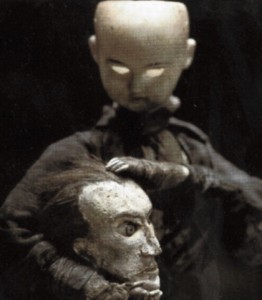 I love the stop-motion puppet animation of the Quay Brothers (Timothy and Stephen), and I was happy to hear that the Museum of Modern Art has launched a retrospective of their work. The New York Times has a great review of the show, A Universe Like Ours, Only Weirder (and includes a slide show).
I love the stop-motion puppet animation of the Quay Brothers (Timothy and Stephen), and I was happy to hear that the Museum of Modern Art has launched a retrospective of their work. The New York Times has a great review of the show, A Universe Like Ours, Only Weirder (and includes a slide show).
Cameron, at Better Than Sunnydale you can Andrew’s review of “Hush,” one of my favorite episodes of Buffy the Vampire Slayer (my most favorite might be “The Body”—might be). Jonte even provides some GIFs of The Gentlemen to get you geared up for watching.
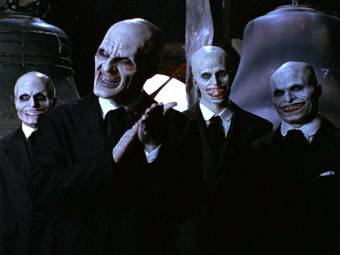
Can’t even shout, can’t even cry
The Gentlemen are coming by
Looking in windows, knocking on doors
They need to take seven and they might take yours
Can’t call to Mom, can’t say a word
You’re going to die screaming but you won’t be heard.
♦ She Blinded Me … with Science.
Natural, Social, and Weird Sciences!
Pupil dilation could be “a subconscious indicator of sexuality”
How to read the landscape from your airplane window
 Three strange theories about why America’s crime rate is so low
Three strange theories about why America’s crime rate is so low
The right way and wrong way to let your mind wander
A new human species has been identified in Africa
Unknown disease causes woman to grow fingernails instead of hair
A disease that can literally scare people to death
Would it be boring if we could live forever? Not if the Game is afoot.
Stop calling Sherlock a sociopath! Thanks, a psychologist.
Cryptozoology!
Cryptids spotlighted in a text viewed as the foundation of modern zoology
How to hunt a basilisk and live to tell the tale
♦ The Ninth Art.
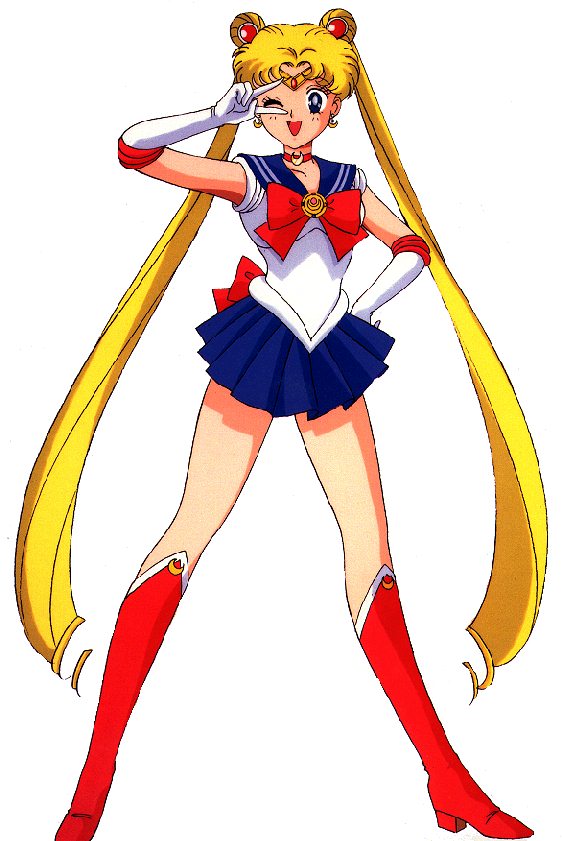 For Mary and Fara in particular and fans in general, check out nevermore999’s great post on Sailor Moon, part of The Great Feminist Manga and Anime List. After an overview of Sailor Moon in a variety of mediums, nevermore999 offers some analysis, beginning with the following:
For Mary and Fara in particular and fans in general, check out nevermore999’s great post on Sailor Moon, part of The Great Feminist Manga and Anime List. After an overview of Sailor Moon in a variety of mediums, nevermore999 offers some analysis, beginning with the following:
Sailor Moon is a series that is unquestionably focused on the growth and power of young women and strength of the bonds between them.
The very premise of it is that women shape the fate of the universe. They are what holds the universe together and are its last and first line of defense. Every single planet and star and satellite has a woman who represents it (A Sailor Senshi/Soldier), who rules it and protects and fights for it, who controls its very fate. You’re going to be hard pressed to find any other story that says women are important, women are essential; women are powerful on such a complete and cosmic scale. What’s more, the mythology of Sailor Moon is that things are pretty fantastic when women are in power- women can be the best rulers and protectors if they put their mind to it. The Queen of the Moon used to protect us all and it was pretty sweet. In the future, women will be in power again and it will also be pretty awesome. Sailor Moon verges on feminist utopian fantasy, unflinchingly saying that girls are good enough to run the world.
Go read the rest, people—good food for thought. Via.
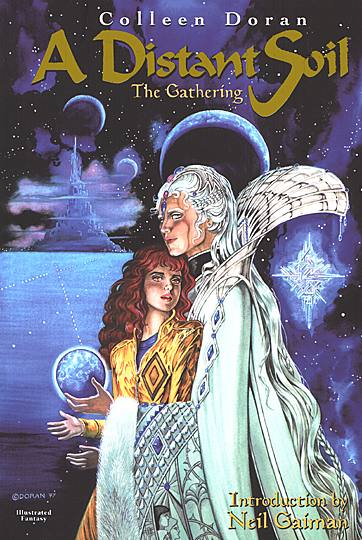 Last week Colleen Doran gave me a nice shout-out on her blog, so I wanted to return the favor (and, honestly, I’m surprised I haven’t done so before, as you’ll see below). Doran is a comic-book artist extraordinaire, having drawn such titles as Orbiter, MangaMan, and, most recently, Gone to Amerikay, among many, many others. She’s drawn for DC Comics and Marvel. I have loved Doran’s exquisite line work from the beginning of her career in 1983 with the preview of A Distant Soil, her long-running cosmic saga, in the 16th issue of ElfQuest. I collected the entire run of ADS at WaRP Graphics, then followed the comic to Starblaze Graphics, then Aria Press, and currently at Image Comics. I think the final volumes of the story will come out in the next couple years, and I am hugely excited. Clearly, I am a fan. I think you will be, too, once you give A Distant Soil a read.
Last week Colleen Doran gave me a nice shout-out on her blog, so I wanted to return the favor (and, honestly, I’m surprised I haven’t done so before, as you’ll see below). Doran is a comic-book artist extraordinaire, having drawn such titles as Orbiter, MangaMan, and, most recently, Gone to Amerikay, among many, many others. She’s drawn for DC Comics and Marvel. I have loved Doran’s exquisite line work from the beginning of her career in 1983 with the preview of A Distant Soil, her long-running cosmic saga, in the 16th issue of ElfQuest. I collected the entire run of ADS at WaRP Graphics, then followed the comic to Starblaze Graphics, then Aria Press, and currently at Image Comics. I think the final volumes of the story will come out in the next couple years, and I am hugely excited. Clearly, I am a fan. I think you will be, too, once you give A Distant Soil a read.
I’m happy to see Agatha Harkness getting some love from Anthony Hope Smith at The Official Handbook of the Marvel Universe REDUXE Edition:
Tansy Rayner Roberts continues her Where the Wonder Women Are series with posts on Jean Grey and Ice.
BookRiot has a great post about Tokyo’s Tokyo, a comic-book store that looks like a comic book. Who wouldn’t want to shop here? Click though here to see more pictures.
♦ Writers’ Corner.
To follow up an article from LitReactor I linked to last week (about whether or not Kickstarter is good for writers), Kelly Thompson tells us what she learned from her Kickstarter campaign (I was a backer of that campaign).
Annalee Newitz gave us 10 literary devices you can find in science fiction. My first thought was, well, of course you can find apostrophe (not the punctuation), synecdoche, aporia, and the rest in science fiction. Actually, that was my second thought, too. Still, a fun list.
Jeff VanderMeer had a great post on publishing, Dreaming Well: Does the Future of Publishing Need More Imagination? Some sound, reasoned thinking, as always.
Speaking of reasoned thinking, Chuck Wendig listed 25 ways to survive as a creative person. After reading this list, I thought of Oscar Wilde’s declaration, “I put all my genius into my life; I put only my talent into my works” (don’t ask me why).
Justine Musk wrote about the most badass thing you can do as a creative—and, no, I’m not going to tell you what it is. Go read the essay! (Tip of the hat to Theodora Goss for sharing this link on Facebook.)
Here are 6 authors who never quit their day jobs (and I promise I’m not going to say anything about this list not including any women or POCs).
Take the Great Book-Spine Poetry Challenge.
Transition As Metaphor (bonus points for those of you who know from which film classic the image in that post comes).
Rob Hart has started a series called Adventures in Self-Publishing to record his experience in self-publishing a novella, which should be interesting since he’s not an established name yet (he’s finishing his first novel); the inaugural installment is Why I’m Doing It, and Also Zombies.
What’s your motif? I do love a motif. Via.
Are fan fiction and fan art legal? A detailed—but easy to follow—response.
♦ Some wonderfully weird art (via):


